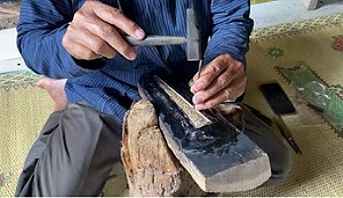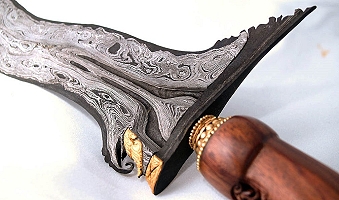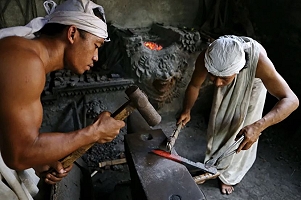Kris/Keris: Difference between revisions
(Created page with "Overview:<br>Advantage Plumbing and Rooter, a leading name in the plumbing industry, has been serving residential and commercial customers for over two decades. Known for their exemplary services and customer-centric approach, this case study explores how Advantage Plumbing and Rooter consistently delivers top-notch plumbing solutions. The focus of this study is a recent plumbing service provided to a large commercial client, highlighting the company's expertise, profess...") |
No edit summary |
||
| (23 intermediate revisions by 2 users not shown) | |||
| Line 1: | Line 1: | ||
<noinclude> | |||
To create a new page, enter a unique page name below.<br> | |||
If a page with that name already exists, you will be sent to a form to edit that page.<br> | |||
For existing pages ... see category Kris/Keris.<br> | |||
Fill in the form with the details of your image and save the page. | |||
{{#forminput:form=Kris/Keris02|autocomplete on category=Kris/Keris|size=40|button text:Create or edit}} | |||
---- | |||
</noinclude> | |||
<includeonly> | |||
<div id="wikiPreview" style="display: none; padding-bottom: 5px; margin-bottom: 5px; border-bottom: 1px solid #AAAAAA"></div> | |||
{{{for template|Kris/Keris02}}} | |||
{| class="formtable" | |||
|- | |||
! Title: | |||
| {{{field|Title|input type=text|size=40}}} | |||
|- | |||
! Artist: | |||
| {{{field|Artist|input type=text|size=40}}} | |||
|- | |||
! Date: | |||
| {{{field|Date|input type=year|size=10}}} | |||
|- | |||
! Size: | |||
| {{{field|Size|input type=number|size=10}}} | |||
|- | |||
! Material: | |||
| {{{field|Material|input type=text|size=40}}} | |||
|- | |||
! Remarks: | |||
| {{{field|Remarks|input type=textarea|autogrow|rows=2|cols=40}}} | |||
|- | |||
! Signature: | |||
| {{{field|Signature|input type=text|size=40}}} | |||
|- | |||
! Published: | |||
| {{{field|Published|input type=textarea|autogrow|rows=2|cols=40}}} | |||
|- | |||
! Collection: | |||
| {{{field|Collection|input type=text|size=40}}} | |||
|} | |||
{{{end template}}} | |||
'''Free text:''' | |||
{{{standard input|free text|rows=10}}} | |||
</includeonly> | |||
[[File:Keris 02.jpg|left|343x343px]] | |||
== What is an Indonesian Kris? == | |||
A kris is an Indonesian, Malaysian or Filipino dagger with a double, often wavy blade, which is believed to have mystical powers. The kris is often worn as a sign of authority or dignity. In Indonesia, the belief is that someone will soon die if one follows a kris in his footsteps. The kris should be taken care of with purification rituals and offerings on every fifth Friday Kliwon of the Javanese (Muslim) calendar. The kris is considered to be inspired and has the right to food and drink like any being on earth.<br><br> | |||
'''What does Keris mean?'''<br> | |||
The Keris (dagger) is the most important cultural heritage for the Javanese. In ancient times a man was not considered a real man if he did not have a keris. The keris was considered as important as owning a big house and a horse.<p> | |||
[[File:Keris 03.jpg|right]] | |||
'''Javanese tradition'''<br> | |||
According to the ancient Javanese tradition, especially that of the Javanese kingdoms, a father was at least obliged to give his son a keris when he reached adulthood. The keris has many different functions. The keris can be regarded as an art object, as part of the equipment of royal soldiers, as an accessory to a ceremonial dress (batik), as a status symbol, etc. Another important reason why the keris was so interesting were the magical powers that the keris is said to have. to own. For example, there would be keris that could protect the owner against all kinds of negative things such as diseases, the threat of wild animals, floods and other natural disasters. On the other hand, personal qualities could also be strengthened or improved. A keris can strengthen your authority, bring you more luck, enhance your personal appeal, etcetera. The opposite also applies, of course, other keris would cause disaster or make their owner a doom magnet. However, it was and are the aesthetic aspects that make the keris attractive to the keris collector.<p> | |||
[[File:Keris 01.jpg|left]] | |||
'''Empu'''<br> | |||
In ancient times it took a year to make a single keris. The one who makes the keris is the Empu. Only a highly regarded Empu is capable of making a keris of high physical and spiritual quality. The empu has to prepare himself spiritually before making a keris, including fasting, not sleeping for a number of days and nights and meditation. Only thanks to the ritual preparation can the empu make the keris in accordance with the wishes of the one for whom the personal, sacred weapon is intended. It is also the empu that adds the specific spiritual powers to the keris. A good keris has perfect physical characteristics and at the same time is imbued with good and strong spiritual power.<p> | |||
---- | |||
'''More info:'''<br> | |||
[https://indosphere.medium.com/keris-the-sacred-daggers-of-indonesia-355326550e8d Keris ... the Sacred Daggers of Indonesia] | |||
[[Category:Kris/Keris02]] | |||
[[Category:Main Page02]] | |||
[[Category:Main | |||
Latest revision as of 17:14, 29 October 2024
To create a new page, enter a unique page name below.
If a page with that name already exists, you will be sent to a form to edit that page.
For existing pages ... see category Kris/Keris.
Fill in the form with the details of your image and save the page.
What is an Indonesian Kris?
A kris is an Indonesian, Malaysian or Filipino dagger with a double, often wavy blade, which is believed to have mystical powers. The kris is often worn as a sign of authority or dignity. In Indonesia, the belief is that someone will soon die if one follows a kris in his footsteps. The kris should be taken care of with purification rituals and offerings on every fifth Friday Kliwon of the Javanese (Muslim) calendar. The kris is considered to be inspired and has the right to food and drink like any being on earth.
What does Keris mean?
The Keris (dagger) is the most important cultural heritage for the Javanese. In ancient times a man was not considered a real man if he did not have a keris. The keris was considered as important as owning a big house and a horse.
Javanese tradition
According to the ancient Javanese tradition, especially that of the Javanese kingdoms, a father was at least obliged to give his son a keris when he reached adulthood. The keris has many different functions. The keris can be regarded as an art object, as part of the equipment of royal soldiers, as an accessory to a ceremonial dress (batik), as a status symbol, etc. Another important reason why the keris was so interesting were the magical powers that the keris is said to have. to own. For example, there would be keris that could protect the owner against all kinds of negative things such as diseases, the threat of wild animals, floods and other natural disasters. On the other hand, personal qualities could also be strengthened or improved. A keris can strengthen your authority, bring you more luck, enhance your personal appeal, etcetera. The opposite also applies, of course, other keris would cause disaster or make their owner a doom magnet. However, it was and are the aesthetic aspects that make the keris attractive to the keris collector.
Empu
In ancient times it took a year to make a single keris. The one who makes the keris is the Empu. Only a highly regarded Empu is capable of making a keris of high physical and spiritual quality. The empu has to prepare himself spiritually before making a keris, including fasting, not sleeping for a number of days and nights and meditation. Only thanks to the ritual preparation can the empu make the keris in accordance with the wishes of the one for whom the personal, sacred weapon is intended. It is also the empu that adds the specific spiritual powers to the keris. A good keris has perfect physical characteristics and at the same time is imbued with good and strong spiritual power.
More info:
Keris ... the Sacred Daggers of Indonesia



